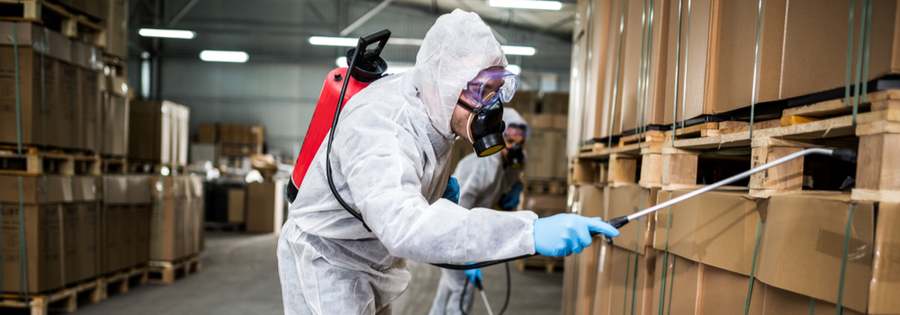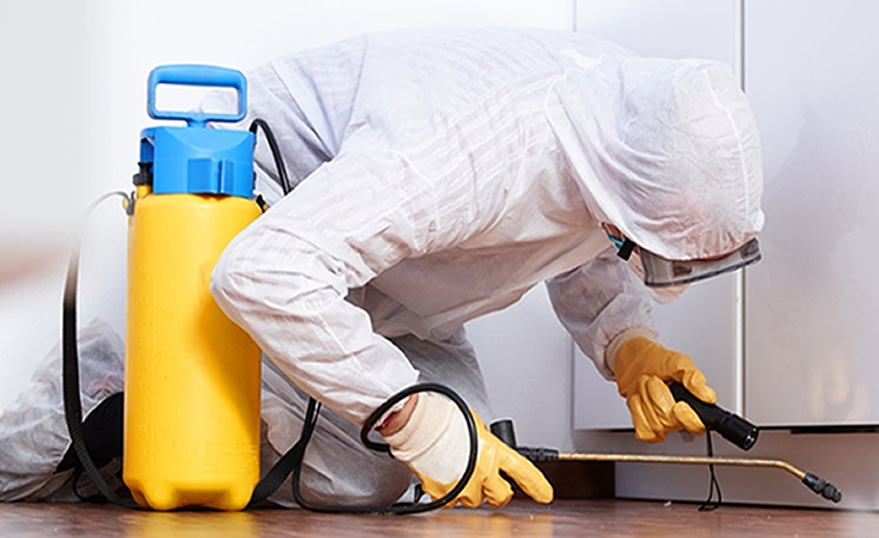Trusted Exterminator Near Me: Your Local Pest Control Service!
Trusted Exterminator Near Me: Your Local Pest Control Service!
Blog Article
Expert Pest Control Techniques for Long-Term Outcomes
Specialist pest control methods encapsulate a comprehensive method that begins with an extensive examination and evaluation, followed by specific pest identification to recognize their behavior patterns. The application of Integrated Pest Management (IPM) concepts, paired with eco-conscious treatments, develops the keystone of lasting pest obliteration.
Evaluation and Evaluation
Upon going into a residential property for parasite control solutions, the initial action is a detailed evaluation and analysis to recognize the degree of the infestation and identify one of the most reliable treatment strategy. Professional parasite control professionals are educated to meticulously check out the premises, searching for indications of pest task such as droppings, nibble marks, nests, or any type of architectural damages. They will also assess the conditions that may be attracting pests, such as food resources, water leaks, or entry factors.

Insect Recognition and Behavior

Furthermore, understanding the behavior of the identified pest is key to implementing effective control measures. Recognizing where parasites nest, what they feed on, and their task patterns can assist pest control professionals design approaches to remove them successfully. Some bugs may be nocturnal, while others are extra energetic throughout the day. This knowledge enables the application of treatments at optimal times for optimum efficiency.
Integrated Insect Administration (IPM)
Integrated Insect Administration (IPM) strategies incorporate multiple methods to manage and avoid pest invasions in a sustainable and eco-friendly fashion. bed bug exterminator. By integrating approaches such as biological control, environment adjustment, adjustment of social practices, and using immune varieties, IPM aims to lessen making use of chemical pesticides
One of the crucial concepts of IPM is the emphasis on prevention. This positive strategy involves surveillance pest populations consistently to spot any type of possible issues before they rise. By identifying bug problems beforehand, pest control steps can be applied quickly and properly.
Additionally, IPM advertises using non-toxic pest control techniques whenever possible. This can consist of using all-natural killers of the parasites, presenting advantageous bugs, or utilizing scents to interrupt breeding patterns. By reducing reliance on chemical pesticides, IPM not just protects the environment but also helps preserve an equilibrium in the ecological community.
Environmentally-Friendly Therapies
Implementing eco-conscious strategies in pest control procedures can effectively address infestations while prioritizing environmental sustainability. Environmentally-friendly therapies concentrate on decreasing the influence of parasite control approaches on communities, non-target organisms, and human health. These methods frequently include the usage of natural predators, such as ladybugs read this article or nematodes, to manage pest populaces, minimizing the requirement for chemical treatments. her response Furthermore, methods like habitat manipulation, such as readjusting dampness levels or removing food resources, can aid prevent insects without using damaging substances.
One more key facet of environmentally-friendly therapies is making use of organic and eco-friendly items that break down promptly without leaving dangerous deposits in the atmosphere. Botanical pesticides obtained from plants like chrysanthemums or neem offer effective insect control while posing minimal risk to non-target varieties. Additionally, using methods like warm therapies or pheromone catches can target specific insects with accuracy, reducing the general ecological impact of bug control techniques.
Ongoing Monitoring and Maintenance
Continual surveillance and upkeep are crucial components of effective bug control monitoring. Ongoing monitoring plays a vital duty in ensuring that pest invasions are found very early and managed promptly. Regular inspections by qualified experts are needed to recognize any signs of parasite activity, evaluate the effectiveness of previous treatments, and make adjustments to the pest control strategy as required. By keeping track of insect populations over time, pest control termite nest removal specialists can track fads, prepare for prospective problems, and execute preventive measures to decrease the threat of future invasions.
In addition to surveillance, maintenance methods are essential for long-term bug control success. This includes applying appropriate hygiene measures to get rid of possible food and water sources for bugs, sealing entrance indicate protect against insects from going into the properties, and addressing any type of architectural concerns that could assist in parasite problems (bed bug treatment). By integrating recurring monitoring and maintenance into an integrated insect monitoring strategy, businesses can guarantee a pest-free atmosphere and protect their building versus pricey damage and health risks
Conclusion
Finally, making use of expert bug control techniques such as complete examination and assessment, exact parasite recognition and understanding of their habits, integrated insect management strategies, environmentally-friendly therapies, and recurring tracking and maintenance are essential for achieving lasting cause insect control. By executing these methods, people can successfully handle pest problems and preserve a pest-free environment in a lasting way.
Report this page